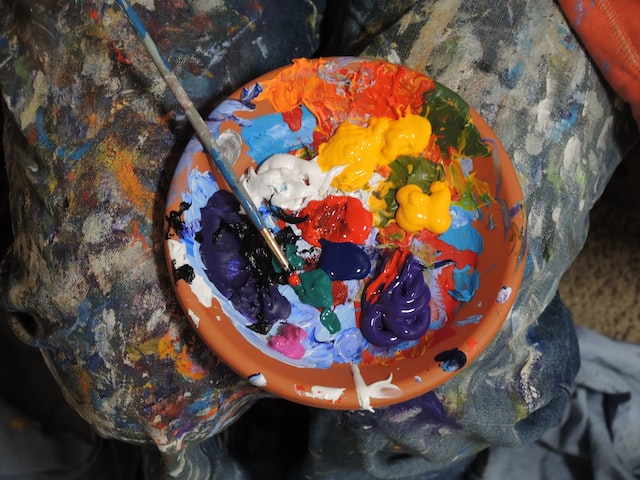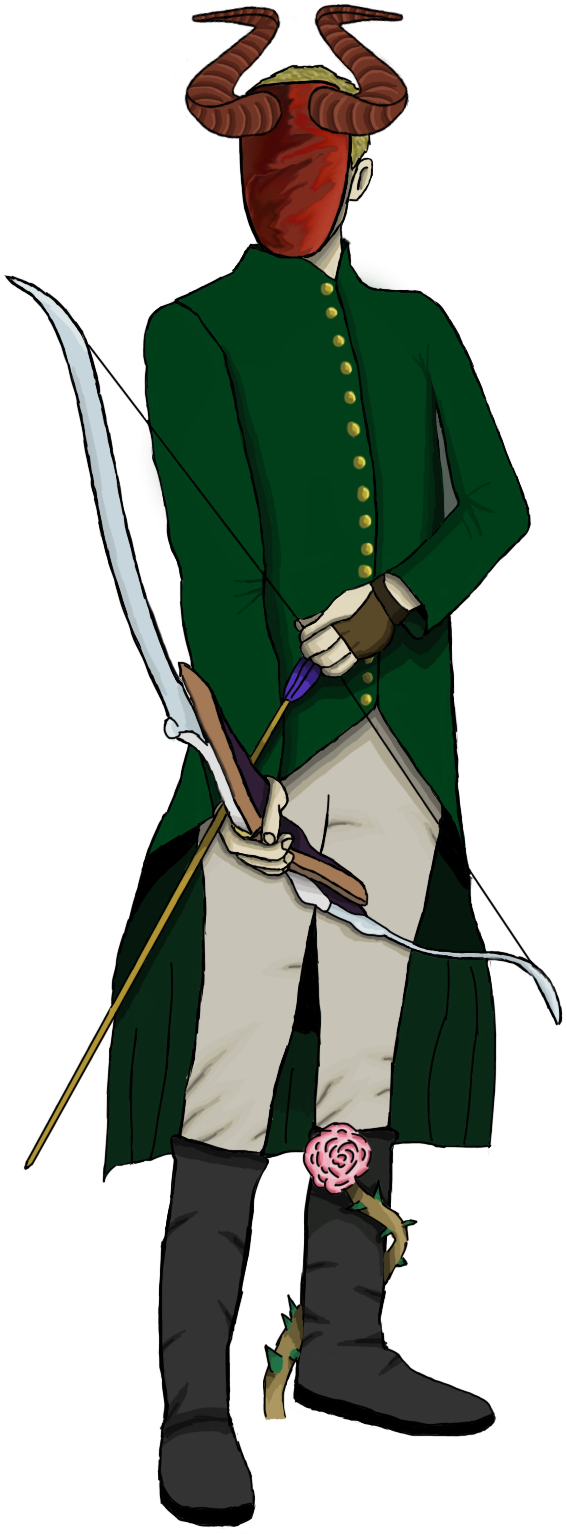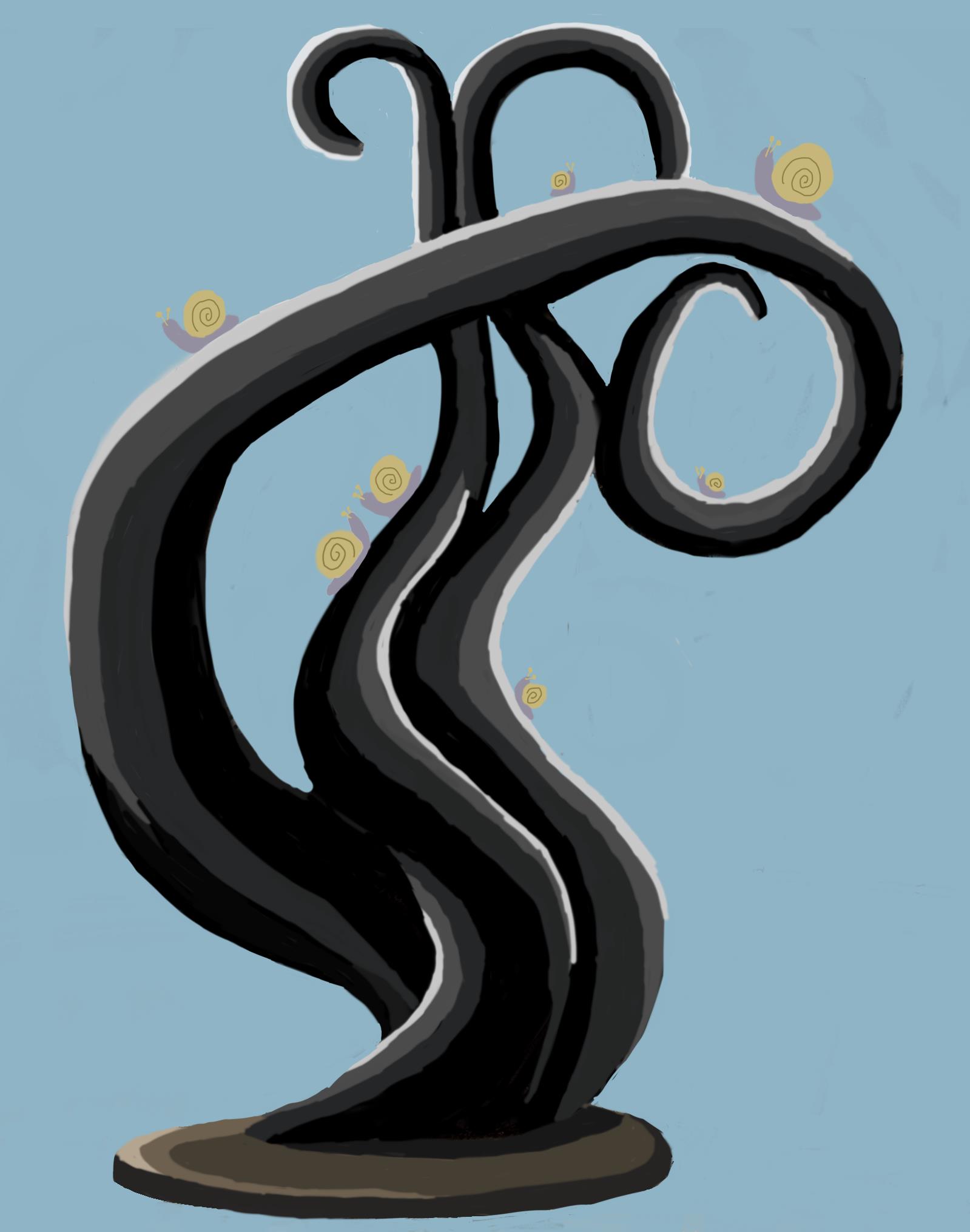Divine portraits
Welcome to Divine Tyranny! In a world where all-powerful gods live among mortals and play with their life for their own entertainment, Archivist Cécile is doing her best to go unnoticed. Unfortunately, the warring water and forging gods are now interested in the archives... Come read about Cécile and the world in which she lives!
Introduction to the story | Cécile | The Archivists | Novel upcoming
Introduction to the story | Cécile | The Archivists | Novel upcoming
Table of Contents
How to artistically represent the gods is an important problematic, as their temples, companies, and cities all need some ways to signify their allegiance, advertise their faith, and let everyone witness the glory of the gods. Symbols such as animals or plants are sometimes associated with the gods, but their use is limited because they can easily be turned against the god they are supposed to represent. Indeed, all animals and plants have their predators and enemies, and the symbols of those could then be used to humiliate—and sometimes even threaten—the gods. All of this means that we require actual portraits of the gods, either as paintings or statues.


The art pieces
A portrait need to represent a god and to be easily recognisable. Portraying imperfection is, of course, unimaginable. Another thing to avoid at all cost is to make the gods look like us, mere mortals, for example by simply portraying them as handsome figures. Gods mostly prefer portraits showing them in their might, with their power full on display and a few quivering figures at their feet.
When setting eyes upon a divine portrait, everyone will feel either a strong sense of awe and of being insignificant in front of such vast power, or, if they have a bad opinion of the god in question, a sense of deep unquiet, often even going so far as it hear some unintelligible disturbing whispers at the edge of their perception.
Unsurprisingly, divine portrait are special. When made by an artist with a minimum of skills, art pieces naturally form a magical connection with their subjects. Such arts are considered to be enchanted. When the subjects are beings as powerful as the gods, they can use this connection for their own means, which mainly consist in turning the portraits into anchors to spy on mortals. Priests say that absolutely everything you say in front of those will always be heard by the gods in question. I fail to see how anyone could possibly consider this comforting...
Popular portrait of the water god:
The risks of making them
Stupid artists
The artists who create a successful portrait are widely acclaimed and rewarded. However, such an attempt does not come without risks. If, for whatever reason, the gods are not happy with their portrait, they, of course, curse the artist. And as usual, the gods are very liberal in what they find offending. There is also a certain one-upmanship between the gods where they all attempt to outdo the gruesomeness of each other's punishments, the most petty going so far as to follow the mortals around while invisible in their spirit form just to have the pleasure of ruining their days. Still, way too many artists want to tempt their chance. Every year in art schools throughout the country, a few young people simply vanish after attempting an ambitious project that displeased a god. This has become a rite of passage, with only those with the most common sense and self-control able to survive the students' drunken nights. Nobody cries over those losses, as it's always best to get rid of such people early before they can drag anyone else down with them.Case study 1
You would think that the graduating adults would then be free from the danger of their ego, but we are not that lucky. Age only makes their excesses even more spectacular. The most famous example of punished artists is that of the painter and sailor Jacques Verti. He was a captain of the royal navy famous for his magical talents and infamous for his overindulgences and artistic pretensions. His and his officers' favourite game was to challenge each other to painting contests while drunk and in the middle of violent storms. Inevitably, one of them ended up focusing on divine portraits. No one who set eyes on the painting has survived to tell us about it, but our Lord the Water God was so offended that he left no doubt that he was the subject of the portrait and that he was the one who took his revenge. Even after all on board of the ship had perished and nobody was left to man it during the tempest, it did not end up in the abyss but miraculously came back to port entirely undamaged. Onboard, all the paintings were torn to shreds, and the crew's bodies were all sat in the mess hall, face in their plates, and drowned in paints with their nose, throat, and lungs full of them.Solution?
Nobody has dared touch the ship or its content since then, and it has stayed anchored in the harbour of the capital in the last century, untouched by storms or rot, and still filled with an ominous mist. It has become a tradition for all new artists to visit it to be warned of what they risk if they succumb to their hubris. The only notable effect this pilgrimage has had is that portraits of the water god have increased in quality. He might have had the right idea after all...
Captain Verti's ship by psychoshadow on DepositPhotos
The risks of owning them
The risks
In addition, representations of the gods obviously need to be immensely treasured and cared for. Even one small scratch damaging them would bring immense misfortune to everyone associated with them—which is not even limited to the immediate owners! The gods are also determined to hunt down everyone involved in any manner, including all the worshippers of the temple, the employees of the company, the inhabitants of the town etc.Case study 2
An example of how silly the gods' wrath can be is the hunting god's revenge for his statue being scratched by the thorns of roses growing at its feet. Howls from her pets could be heard from months on end in the village owning her statue, and all its inhabitants ended up dying of the stress or by being mauled after attempting to flee.Case study 3
Another similar example is the shadow god's revenge for finding some snail slime on his statue one morning. The members of the church owning it were tormented by seeing unnatural shadows flickering from the corners of their eyes no matter how much light they surrounded themselves with. As soon as they would relax their watch, those shadows would creep closer and linger on their skin, swallowing little bits of it at a time, until months later nothing of the offenders was left.Solutions?
For the people who become involved with damaged art pieces, the only solution to "break" the curse is to immediately throw themselves at the mercy of the god and sponsor a new extravagant art that is far superior to the damaged one. Of course, this will not prevent them from having to continue to do penance for this slight for the rest of their days. Despite the dangers, some people still crave the prestige and glory that goes with owning a divine portrait and will take the risks of making one, commissioning one, or, for the most daring, stealing one. If paintings are torn or sculptures shattered during the thefts, both the negligent owners and the would-be thief are naturally equally held responsible by the gods. Keeping divine portraits carefully locked away behind closed doors is very tempted. Unfortunately, the gods find this highly insulting, and this also defeats the purpose of having art in the first place. Instead, the owners have to resort to using guards to haunt more or less discreetly the locations where the portraits are, and hope they can prevent any damage.What to do with problematic arts
Unwanted arts
With all of this, any reasonable individual would be at pain to dissociate themselves from such dangerous art pieces. With popular gods, it is easy to find someone to take over and even pay you for it, but what of unpopular gods or those that have been abandoned by all of their followers after some defeats or other humiliation? Their unpopularity will not protect you from their revenge if their portraits are damaged. Another god could potentially protect you—especially if you destroy their rival's portrait. However, they would have to be extremely motivated to defend you and never leave your side again—and we all know that no god is that generous. Even worse than simply unpopular arts are the ancient relics left from the time Eldritch Horrors were worshipped. For those, it's not a simple question of not wanting to offend them by not damaging their portraits; it's that all those art pieces are unfortunately both indestructible and extremely dangerous. Indeed, just laying eyes on them can create a gateway to allow them to escape their prisons by possessing the viewers. Even a child scribbling a drawing of an Eldritch Horror's tentacle on the ground is enough to create an echo with their terrible mind. Therefore, making any representation of them is strictly forbidden on pain of unimaginable torment from the gods, and even talking about the Horrors themselves is rather taboo. Some enterprising people have attempted to put two divine portraits in found of each other or to put a mirror in front of one in order to redirect their malevolence towards each other or themselves. The fact that none are around to tell the tale should be enough to demonstrate how well this worked...Solutions?
The only solutions we have found to those problems is to bury the problematic art pieces deep underground. You have to wrap them carefully, of course, to protect them from animals or fungi—to avoid them damaging the portrait normal gods' portraits or getting contaminated by Eldritch Horrors' portraits. Thankfully, in the case of Eldritch Horrors, the gods took care of those themselves by opening chasms in the earth to swallow them. Unfortunately, from time to time, people still stumble upon ruins of their temples, which immediately results in the unleashing of their darkness and evil upon the earth. What is saving us is that the sudden high amount of deaths is rather hard to miss, and the gods always manage to intervene in time. At least, so far...
A mirror in front of a painting of an Eldritch Horror by AmélieIS with an image from Raggedstone on DepositPhotos
Opinion from the archives
All of this makes it obvious than nobody with sense would get anywhere near any divine portraits if we can avoid it. All the problems come from the fact that we cannot. If you want a reasonable lifespan, you have to belong to the major gods' churches and worship in their temples at the foot of their statues.
And even at home, we cannot escape them. All director instruments channelling prayer magic towards the desired god come with a small divine statuette or portrait. The only way to mitigate the risks is to go with a bland style that has been around for a few years and has already been approved by the gods—as indicated by the fact that nobody has been smitten down for making or owning them—made in series and owned by many—in the hope that the god would be reluctant to kill thousands of their followers all at once and thus lose a huge amount of magic from our worship. Standing out from the crowd is never a good idea where the gods are concerned...





Yay this was so awesome! I hope many have gained respect towards the hunter god's statues in the future, and maintain it properly :P